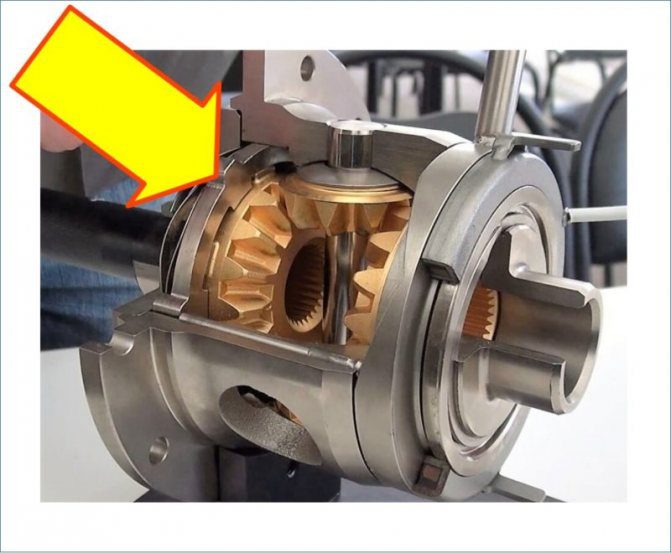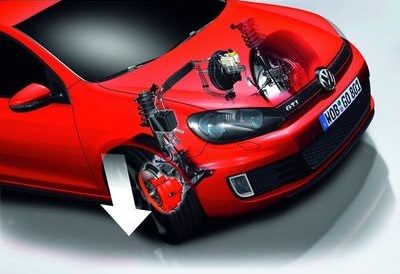
What is XDS System (EDS)?
 The XDS system was developed by Volkswagen to increase the traction of a front-wheel drive vehicle in fast cornering. It was first used in the Golf GTI / GTD. Therefore, the so-called electronic assistant responsible for braking the inner front wheel, which essentially replaces the work of a mechanical limited-slip differential.
The XDS system was developed by Volkswagen to increase the traction of a front-wheel drive vehicle in fast cornering. It was first used in the Golf GTI / GTD. Therefore, the so-called electronic assistant responsible for braking the inner front wheel, which essentially replaces the work of a mechanical limited-slip differential.
In principle, this is an extension of the EDS (Elektronische Differentialsperre) system - an electronic differential lock. The EVS system helps to improve the vehicle's traction – for example, to improve road handling due to significantly different traction on the drive wheels (ice, snow, mud, gravel, etc.). The control unit compares the wheel speed and brakes the spinning wheel. The required pressure is generated by a hydraulic pump. However, this system only works at lower speeds - it usually turns off when the speed is around 40 km/h. XDS works with Electronic Stability Program (ESP).
The XDS system helps when cornering. When cornering, the car leans and the inner wheel is unloaded by centrifugal force. In practice, this means a shift and a decrease in traction - the grip of the wheel and the transmission of the driving force of the vehicle. The ESP control unit constantly monitors vehicle speed, centrifugal acceleration and steering angle, and then estimates the required brake pressure on the inner light wheel. Due to the braking of the shifting inner wheel, a large driving force is applied to the outer loaded wheel. This is exactly the same force as when braking the inner wheel. As a result, understeer is greatly eliminated, there is no need to turn the steering wheel so much, and the car holds the road better. In other words, turning can be a little faster with this system.

A car equipped with an XDS system does not need a limited-slip differential, and besides the VW Group, Alfa Romeo and BMW also use a similar system. However, the system also has disadvantages. Under normal conditions, it behaves like a conventional differential and its abilities only begin to manifest itself when driving fast - the inner wheel slips. The more the inner wheel tends to slip, the more the control unit will use the clamping effect of the paddles built into both sides of the output shafts. For fast and long trips, for example, there may be more significant overheating of the brakes on the circuit, which means their damping and reduced efficiency. In addition, it is necessary to take into account the increased wear of brake pads and discs.

